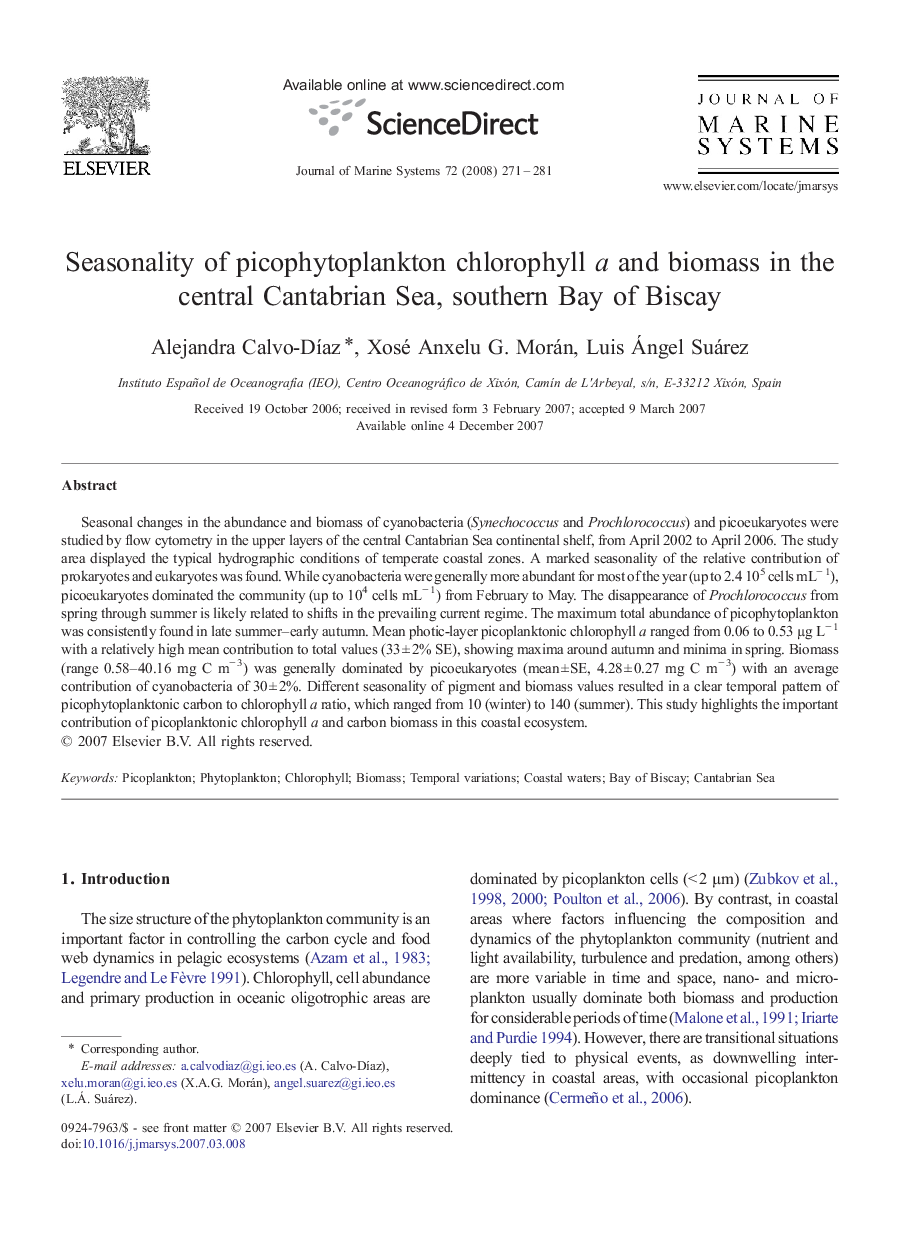| Article ID | Journal | Published Year | Pages | File Type |
|---|---|---|---|---|
| 4548842 | Journal of Marine Systems | 2008 | 11 Pages |
Abstract
Seasonal changes in the abundance and biomass of cyanobacteria (Synechococcus and Prochlorococcus) and picoeukaryotes were studied by flow cytometry in the upper layers of the central Cantabrian Sea continental shelf, from April 2002 to April 2006. The study area displayed the typical hydrographic conditions of temperate coastal zones. A marked seasonality of the relative contribution of prokaryotes and eukaryotes was found. While cyanobacteria were generally more abundant for most of the year (up to 2.4 105 cells mLâ 1), picoeukaryotes dominated the community (up to 104 cells mLâ 1) from February to May. The disappearance of Prochlorococcus from spring through summer is likely related to shifts in the prevailing current regime. The maximum total abundance of picophytoplankton was consistently found in late summer-early autumn. Mean photic-layer picoplanktonic chlorophyll a ranged from 0.06 to 0.53 µg Lâ 1 with a relatively high mean contribution to total values (33 ± 2% SE), showing maxima around autumn and minima in spring. Biomass (range 0.58-40.16 mg C mâ 3) was generally dominated by picoeukaryotes (mean ± SE, 4.28 ± 0.27 mg C mâ 3) with an average contribution of cyanobacteria of 30 ± 2%. Different seasonality of pigment and biomass values resulted in a clear temporal pattern of picophytoplanktonic carbon to chlorophyll a ratio, which ranged from 10 (winter) to 140 (summer). This study highlights the important contribution of picoplanktonic chlorophyll a and carbon biomass in this coastal ecosystem.
Keywords
Related Topics
Physical Sciences and Engineering
Earth and Planetary Sciences
Oceanography
Authors
Alejandra Calvo-DÃaz, Xosé Anxelu G. Morán, Luis Ángel Suárez,
